How to make a sewer for a private house: 3 stages of work,
Now more and more people are refusing to live in a dusty and stuffy metropolis, preferring to them a quiet and serene dwelling in the country in their own cottage. Thanks to modern construction technologies in such a home you can equip all the necessary engineering networks. The instructions given in this material describe how to properly make sewage in a private house, since this system is one of the most difficult to design and install.
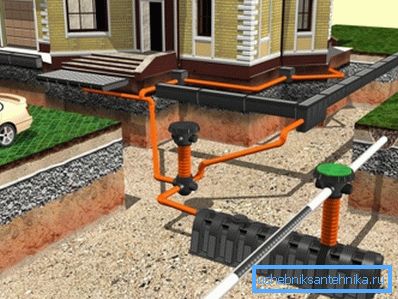
Sewage scheme
The system of sewage disposal in individual housing construction can be done by hand. Building supermarkets offer a large variety of materials for this. Installation of drain pipes and other additional elements does not require special knowledge and the use of sophisticated equipment.
Despite this, the neglect of some rules (for example, failure to comply with the slope of water pipes when they are fixed) can lead to a complete inoperability of the finished engineering network. Therefore, the importance of knowing how to properly sewage in a private house, it is difficult to overestimate.

Previously, separate toilets with a cesspool, constructed from scrap materials, were used as sanitary facilities on a suburban land plot. This building had only one advantage - an extremely low price of construction. But about any comfort it was not.
Now the correct sewage system in a private house consists of three essential components.
| System | Description |
| Internal | A network of pipelines through which sewage is taken from various plumbing fixtures and transported to the point of contact with the external system. |
| Outdoor | A pipe (or several), which is necessary to connect the internal sewage system with a central sewage system or (more often) with an individual storage well (septic tank) |
| Reservoir (wastewater treatment plant) | The central element of the sewerage system of individual housing. Often it is a cumulative tank, where waste is stored before pumping it with the help of assenizatornoy technology, or septic tank, filtering and purifying wastewater. |
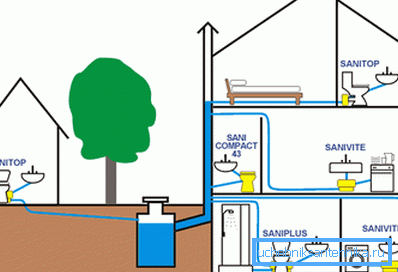
Tip! In addition to the sewage system that disposes of dirty water from the premises, a storm sewage system should be developed and constructed. Sometimes these two networks are combined with each other. But remember that rainwater contains impurities of oils and fuels, because it can not be cleaned in the biological treatment station.
The rules of sewage in a private house are somewhat different from the similar network in the apartment. Consider the process of creating each of the above elements in more detail.
Creating an autonomous sewer
Stage 1. Construction of the tank
This element, as already mentioned, is central to the whole system. Therefore, answering the question how to properly lay the sewage system in a private house, he should be given special attention.
Before starting construction, you need to choose the appropriate type of tank:
- Cesspit. It is a fairly large pit, the walls of which are lined with brick or concreted. You can also use ready-made plastic containers that are sold in hardware stores or concrete rings.
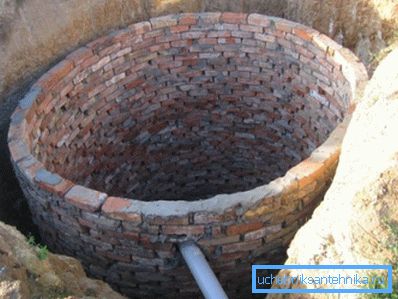
In the pit, waste is not processed at all and is stored there until it is pumped out using special equipment.
- Septic tank. Tanks (there are 2 and 3 sectional septic tanks) where filtering of sewage is carried out. For this, special filters can be additionally used (they catch suspended particles) and special microorganisms (they recycle organic waste). The last chamber is unpressurized, which allows to remove purified water. If the work on the arrangement of the sewage septic tank is done correctly, pumping of the bottom sediment can be done with the help of drainage pumps no more than once every 2-3 years. The sludge obtained is excellent as a fertilizer. As in the previous case, there are ready-made septic tanks. You just need to purchase the model of the volume you need and correctly install it in the pit.
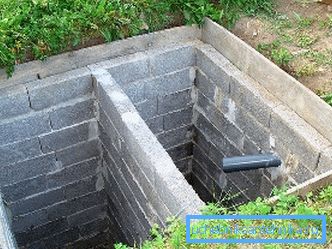
- Individual biological treatment station. This is a fairly compact unit that most effectively cleans sewage drains. The resulting water is quite suitable for use in the garden and in the garden.
Disadvantages of this solution:
- high price;
- the need for regular maintenance with the involvement of specialists;
- Mandatory electrical connection.
The optimal choice can be considered a septic tank. Its arrangement will not require large expenditures, and in the process of further exploitation you will not need to seek help from specialized firms that provide waste collection.
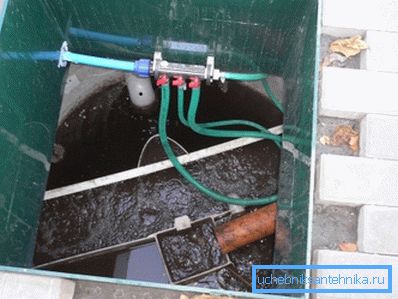
Stage 2. Internal system
The next stage of construction is the construction of domestic sewage. It is important to properly plan the installation of all pipelines and other shaped parts. Improvements in the future may entail significant material losses. For example, the lack of sewage audits will make it impossible to clear the blockages.
Previously, all sewage systems were equipped with cast iron pipes. Now it is not necessary to do this. There are many plastic materials to choose from: polyethylene, polypropylene, PVC pipes and fittings. The best for laying domestic sewage are PVC parts that are resistant to high temperatures and chemical detergents.
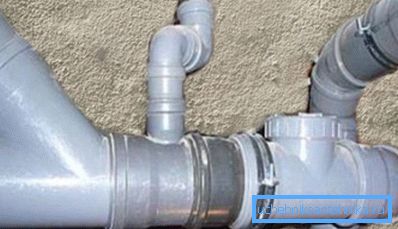
In addition, for their installation does not need to use special equipment or glue (as opposed, for example, from polypropylene pipes). It is only necessary to insert the smooth end of one part into the socket of the other, and the rubber seal available there will ensure an adequate level of tightness.
Tip! To equip the sewer system in the house is enough to use pipes with a diameter of 110 and 50 mm. The former are used for main sections, risers and toilet bowls, the latter - in all other cases. The use of parts of larger diameter is not economically feasible.
How to install sewers in a private house to ensure its trouble-free operation? For this, it is very important to withstand a slope: about 3 cm per each meter of the pipeline, which will allow the sewage to move freely through the system under the influence of gravity.
A steeper angle will prevent self-cleaning of the internal space of the drainage system and lead to the deposition of grease and soap residues on the walls.
The pipes are fixed to the wall or floor with the help of special clamps of suitable diameter.
Stage 3. Outer section
The length of the drain network that connects the discharge pipe of the internal sewage system with a septic tank or accumulator is called external sewage. It serves to transport waste to the point of recycling (temporary storage).
The material used for pipes is:
- Cast iron. The most durable products that are heavy and expensive. For their installation most often you need to use special engineering equipment.
- Asbestos cement. When buying and installing such pipes, make sure that their inner surface is completely smooth. Otherwise, blockage may occur.
- Plastic. PVC pipes for external sewage, as well as various shaped parts are painted in brown.
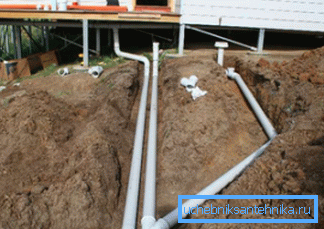
The pipeline must be buried in the ground to a depth of about 1.5 meters, which will prevent water from freezing during the cold season. Otherwise, measures should be taken to warm it.
Conclusion
Before installing the pipeline, carefully consider its design. At the same time pay attention not only to the price of installation, but also to the cost of further operation. Perhaps saving now, in the future you will have to pay too much money for the service (for example, the payment of waste collection services).
More information about sewer systems can be found in the video in this article.